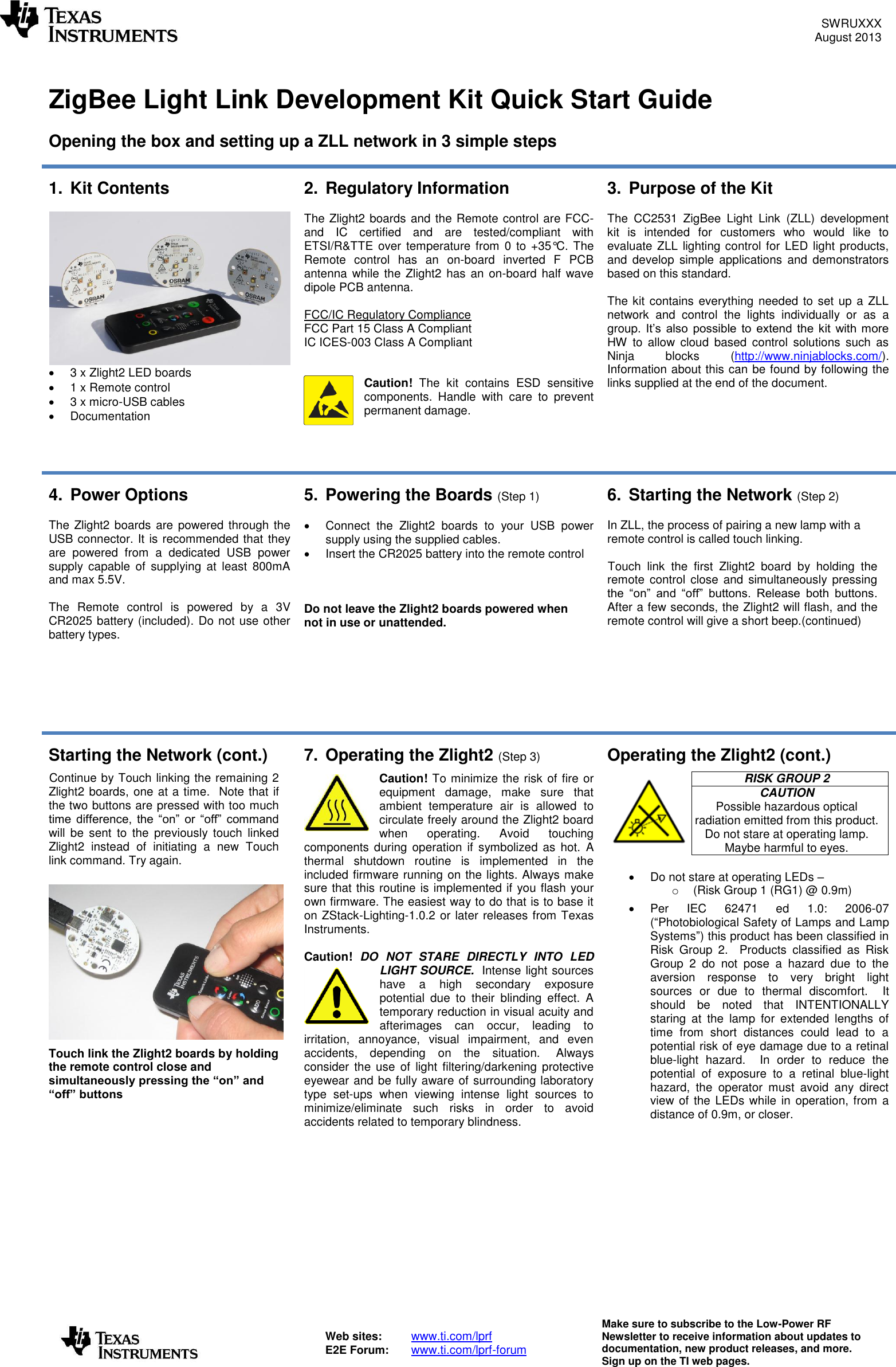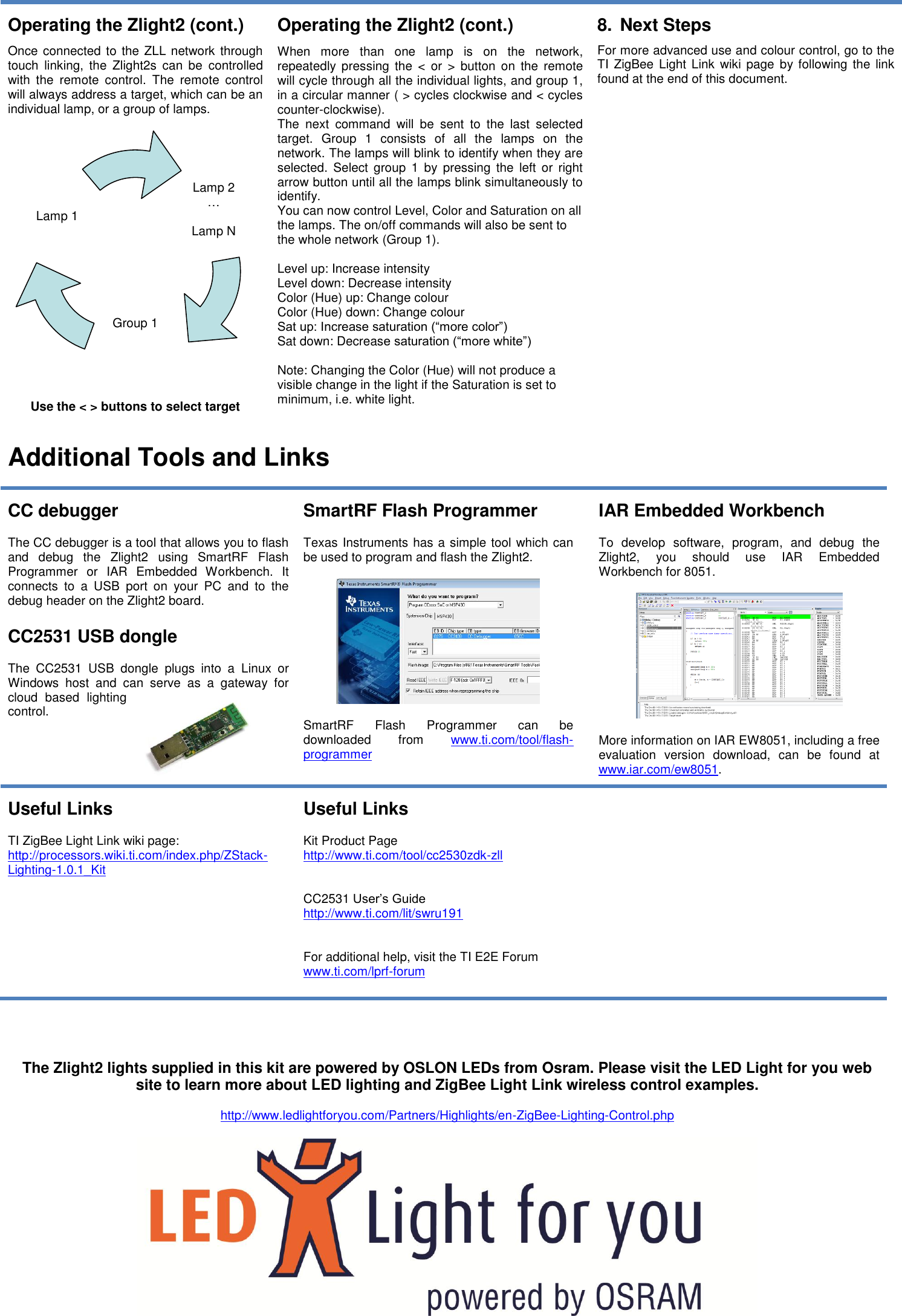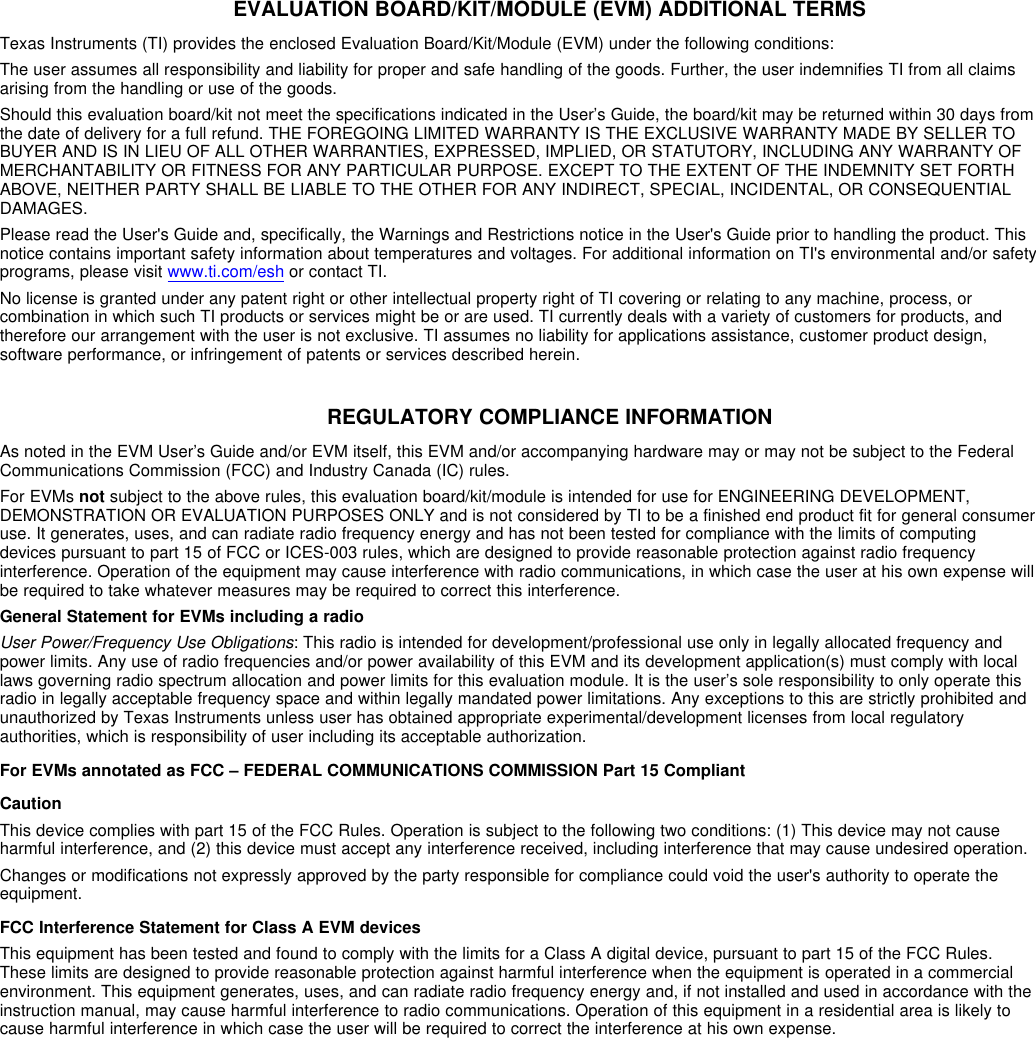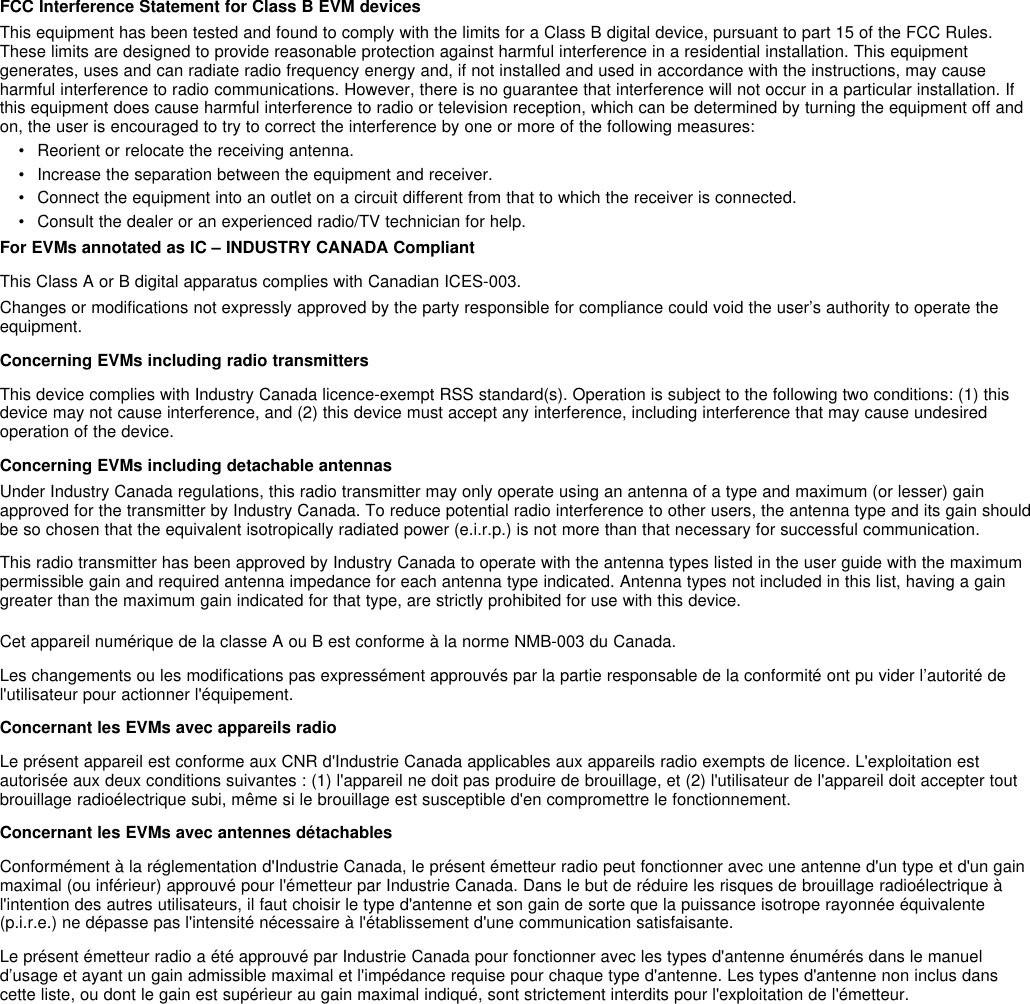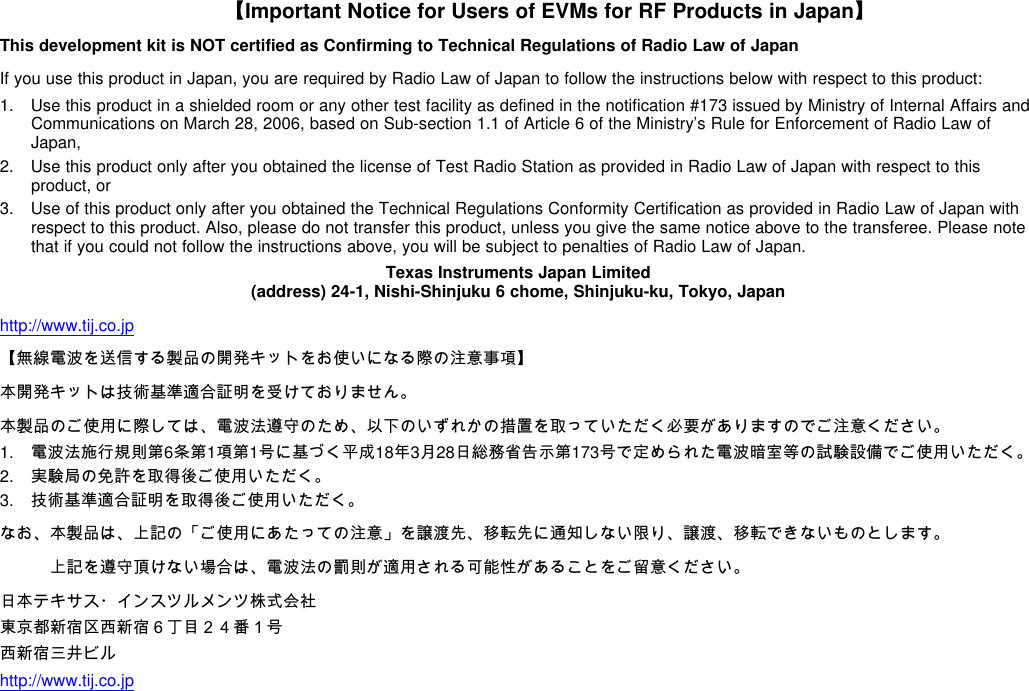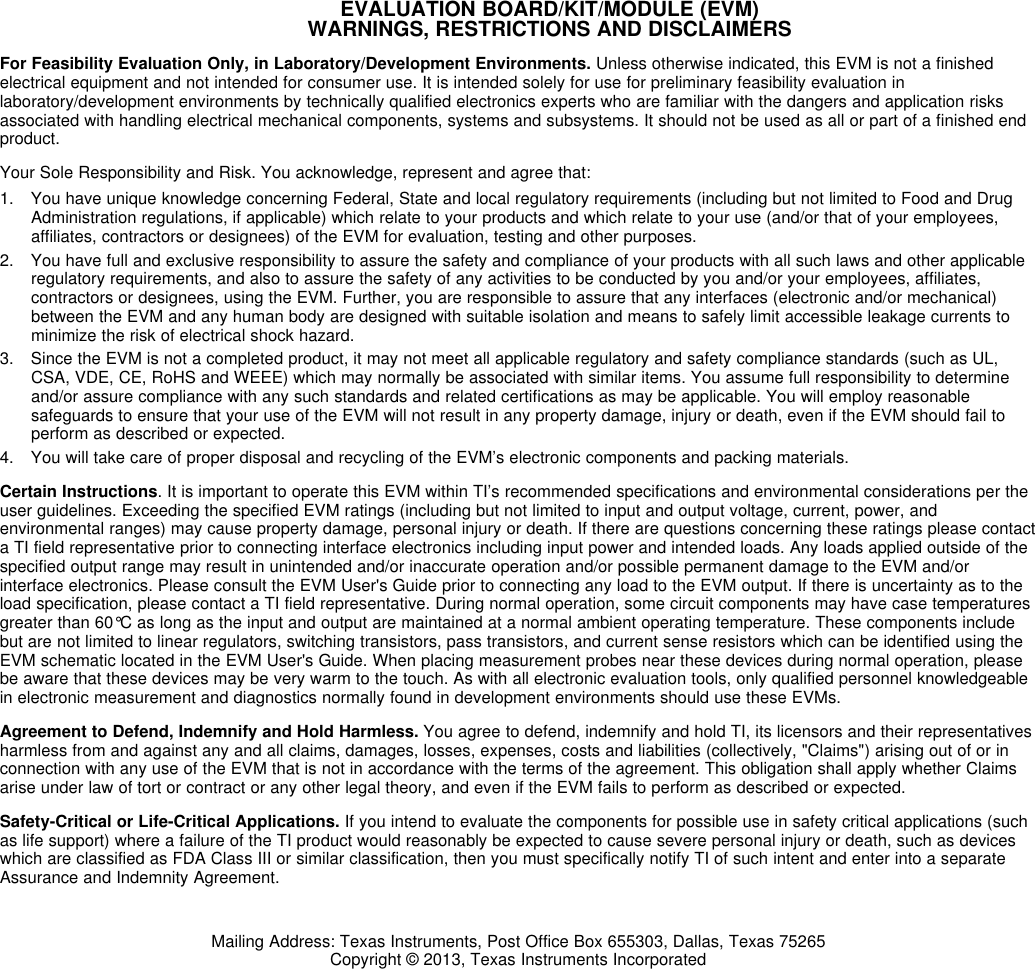Texas Instruments ZLLRC The ZLLRC is a development tool for TIs 2.4 GHz CC2530 IEEE802.15.4 System-on-Chip User Manual EVALUATION BOARD KIT MODULE EVM ADDITIONAL TERMS
Texas Instruments Inc. The ZLLRC is a development tool for TIs 2.4 GHz CC2530 IEEE802.15.4 System-on-Chip EVALUATION BOARD KIT MODULE EVM ADDITIONAL TERMS
User Manual
